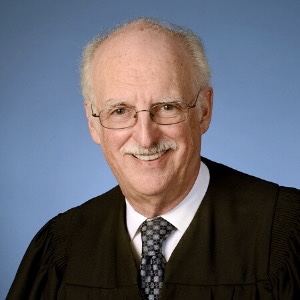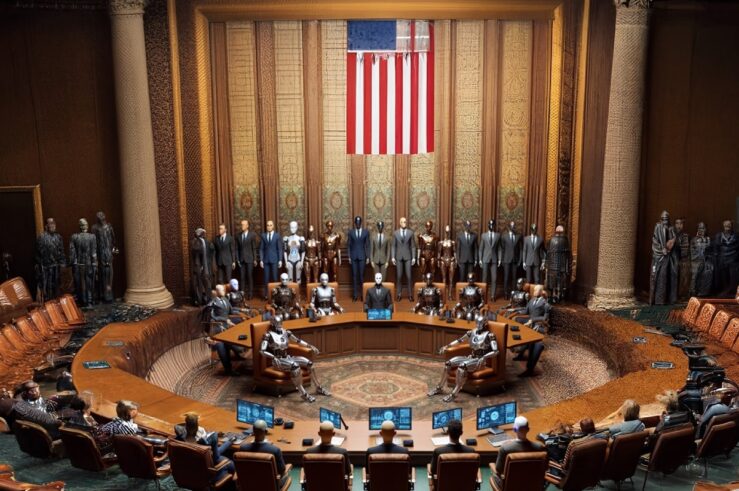This article is a part of the Free to Choose Symposium symposium.
In the brave new world contemplated by the advocates of government policies informed by behavioral law and economics, many more aspects of each individual’s life will be regulated, or more stringently regulated, than at present. Within the legal academy, the growth of the behavioral law and economics movement has been dramatic. Surveying all legal publications from 1980 through 1984 reveals that only a single article made mention of the phrase “behavioral economics.” In 2005 through 2009, however, there were 917 such articles. What, we must ask, accounts for the great and increasing attraction of the subject to legal academics?
For at least the last 40 years, academic legal writing has been highly prone to the vicissitudes of fashion. Starting around 1970 the fashion turned to economic analysis of law; particularly after Richard Posner published his treatise on that subject in 1973, scores of articles presenting an economic analysis of a particular legal doctrine appeared in the law journals every year.
In something of a reaction to the growing interest in economic analysis, a smaller but prolific cadre of law professors created the Critical Legal Studies (CLS) movement, which in turn inspired cognate schools such as Critical Race Theory, Critical Feminism, and Queer Theory. CLS, which had a significant following, advanced the idea that all law (including court made law) is indistinguishable from politics, particularly class politics. See, e.g., Morton Horwitz, The Transformation of American Law: 1780–1860 (1977); Roberto Unger, Knowledge and Politics (1975); Mark Kelman, Consumption theory, Production Theory, and Ideology in the Coase Theorem, 52 S. Cal. L. Rev. 669 (1974). As recounted by Duncan Kennedy, a leading figure in the movement, one of the early projects of CLS was to “produce[] a critique of mainstream economic analysis of law.”
Overtly a leftist movement, CLS turned out to be little more than a species of Marxism. The self-declared purpose of the CLS movement was “to provide a critique of liberal legal and political philosophy,” with adherents arguing the “liberal embrace of the rule of law is actually incompatible with other essential principles of liberal political thinking.” Andrew Altman, Critical Legal Studies: A Liberal Critique 3 (1990).
Key to the CLS analysis was the notion of “false consciousness,” defined as the “holding of false or inaccurate beliefs that are contrary to one’s own social interest and which thereby contribute to the maintenance of the disadvantaged position of the self or the group.” John T. Jost, Negative Illusions: Conceptual Clarification and Psychological Evidence Concerning False Consciousness, 16 Pol. Psychol. 397, 400 (1995). Driving a wedge between reality and what people — that is, other people — perceive, creates a space to be filled by some combination of re-education and, insofar as the public is not radicalized, a resort to paternalism. The combination is nicely encapsulated, and given a Mao-ist tinge, in Duncan Kennedy’s proposal that professors and janitors at the Harvard Law School be required to trade places for one month each year. See Legal Education as Training for Hierarchy, 32 J. Legal Educ. 591 (1982). The ultimate goal of CLS, as stated by Kennedy was that of “building a left bourgeois intelligentsia that might one day join together with a mass movement for the radical transformation of American society.” Id. at 610.
The end of the communist era in Russia and eastern Europe dealt a blow to CLS, as it did to all leftist movements; the worldwide triumph of socialism, which had long seemed inevitable to so many, never seemed more improbable. That is not to say that CLS vanished or even went underground; the leading authors are still publishing, but new recruits seem to be scarce.
With interest in CLS and other “critical’ movements waning, legal scholars were in danger by the mid-1990s of being remitted to further work in economic analysis of law (or even more traditional doctrinal exegeses). But unlike the pioneering work in that field, which had been done by academic lawyers with only informal training in economics, such as Posner, Robert Bork, Henry Manne, and Guido Calabresi, by the 1990s the law schools had appointed to their faculties one or more Ph.D economists. In other words, the field had grown up; creative and talented amateurs gave way to highly trained professionals using the formal tools of economics and statistics. An assistant professor without significant formal training in economics could not hope to distinguish himself in law and economics, let alone write something to warrant his promotion to a tenured position.
Behavioral law and economics came to the rescue. Just as the first wave of law and economic scholarship had provided hundreds of opportunities to revisit plowed ground and turn up new insights, behavior law and economics offered a reason to return to the same ground once again with confidence the new approach would yield new results. Much of the early law and economics work explored the hypothesis that a particular common law rule was efficient or, in the public choice variation, that a particular statutory provision served some special interest and was inefficient. In the new scholarship, the author would almost inevitably conclude the prevailing rule should be reformed to take account of a cognitive bias of those individuals subject to the rule or to regulate some as yet unregulated conduct in order to protect individuals from the errors they commit in an attempt to pursue their self-interest.
Because behavioral law and economic scholarship yields proposals for law reform less radical than what CLS had produced, it appeals to a larger segment of the legal professoriate than CLS ever did. At the same time, behavioral law and economics shares with CLS the paternalistic premise that the poor wretches to be benefitted by the insights of their governors suffer from a form of “false consciousness.” Behavioral law and economics scholars never use that phrase but the concept is the foundation of their entire enterprise.
False consciousness, then, is a hearty perennial, much like the notion that there is a “third way” of social organization that suffers from neither the arbitrary and inefficient nature of government nor the unforgiving ways of the market. The staying power of the idea reflects the romantic notion that government can help individuals overcome their own frailties and conform their behavior to their stated goals.





